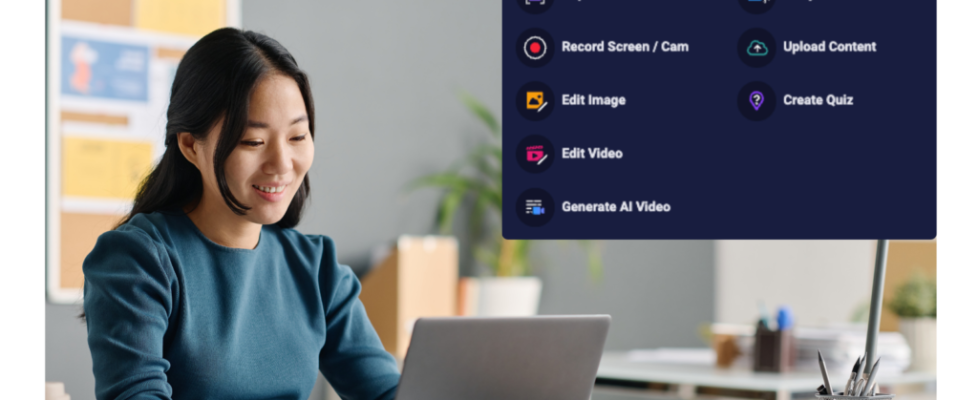College students in one Cal Poly communication class say they enjoy using asynchronous video as a communication tool. That’s good because McKinsey reports that 9 out of 10 executives envision hybrid work as the future of their companies, meaning video will likely be a daily requirement once these college students enter the workforce.
Today’s students need strong digital literacy skills to help them build connections in a post-pandemic world, that’s according to Martin Mehl, a communications study professor at California Polytechnic State University in San Obispo.
After more than a year of remote learning, a group of Mehl’s communication students shared their thoughts about how asynchronous video helped them learn more effectively and gain confidence.
The Power of Asynchronous Learning
After more than a year of learning online, Mehl’s students have gained valuable digital skills and the confidence to use them in school or on the job.
The group of freshman students say they have a much easier time using technology to communicate now, and they plan to continue making videos.
“If I’m at a company and I have to put a presentation together, ScreenPal is totally necessary, so it’s nice to have practice and experience with it,” says college student Erik McCutchen.
Why Students Love Learning With Video
Mehl’s class shared their favorite things about learning with asynchronous video. Here’s what they learned during the process:
Easier to focus
Freshman Samantha Day notes that asynchronous video makes it much easier to plan her study sessions strategically. “When you’re responsible for reading 10 articles on the side, the video lecture helps you figure out what to pay attention to as you manage your work,” she says. “Asynchronous lectures are very, very helpful.”
Rewatchability
Dairy science major Lauren Scheidt praises asynchronous video for its ability to replay.“I have a couple of asynchronous classes right now, which is nice because you can go back and rewatch the recording if you miss something or you don’t quite understand something,” she says.
Flexibility
Scheidt also values teachers’ flexibility and willingness to use remote or hybrid learning methods. She says many people tend to keep doing what they’re used to, but that doesn’t work in education. “Standing in front of a whiteboard writing during the lecture isn’t always the most effective, especially when we’re in a different learning setting,” she adds.
Freshman Gram Boden also likes the flexibility of asynchronous video. “You can learn on your own schedule and take your classes from basically anywhere,” he says.
Telling Powerful Stories
Mehl’s students also enjoyed making videos for class because asynchronous video makes it easy to tell stories in impactful ways. Day, who competed in a video creation challenge using ScreenPal, says the screen recorder and video editor tools did all of the hard work for her.
“The recording part was easy, and being able to pause and resume while filming was helpful,” she says. “The editing was super easy, presenting it was super easy, and I loved being able to copy the link and share my project with the class.” Day’s favorite part of ScreenPal was the highlight tool, which she used to emphasize important information on the screen as she presented.
Building confidence
Architecture major Greta Nerad also competed in the video creation challenge, says that making asynchronous videos helped her get more comfortable with presentations. “I wouldn’t say I’m a super confident public speaker, so it can be hard to record knowing that there’s going to be people watching the recording,” she says. “But the peace of mind from knowing that I’m in control of the recording was helpful.”
Asynchronous Learning Empowers Students
Knowing how to create and share high-quality videos empowers students to tell meaningful stories in memorable ways. Try it with your class and watch their confidence grow.
Learn more about the video creation challenge.
Watch the students’ progress as they learned about video creation:

































